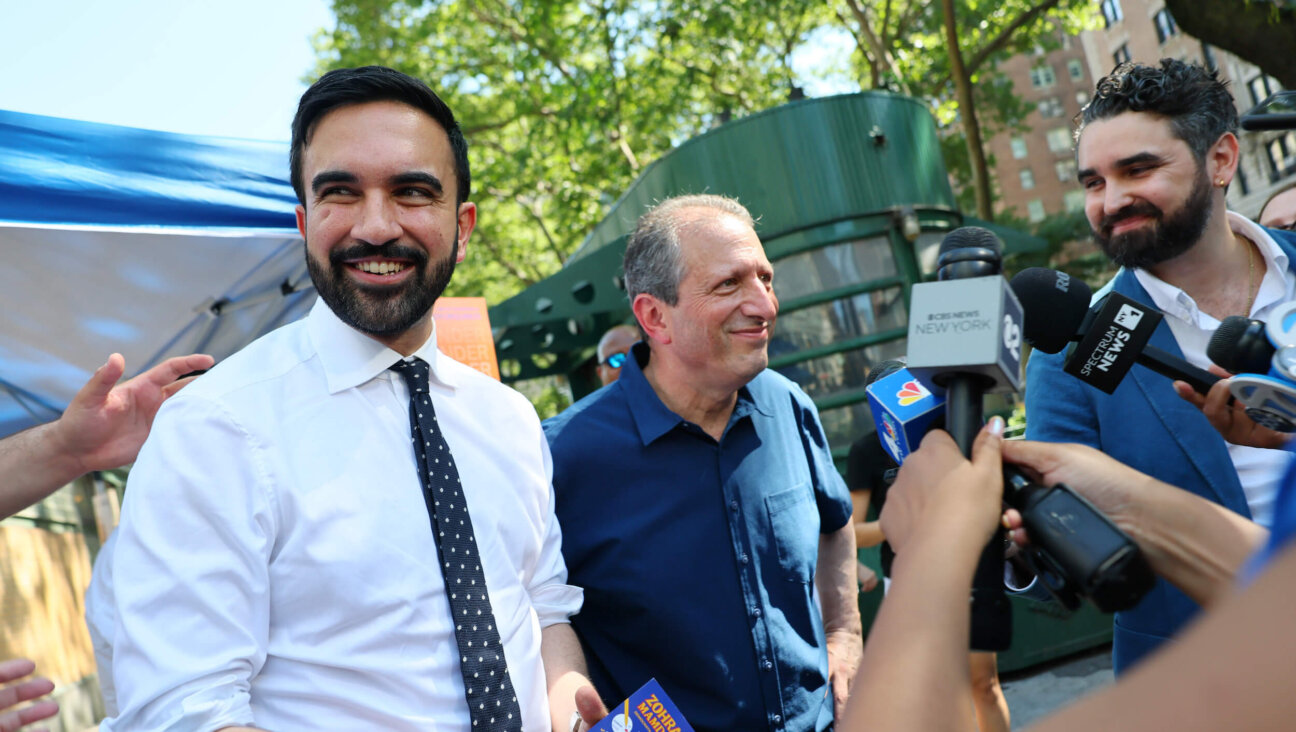Time To Rethink the New York Jew

Image by getty images

Younger, Poorer and More Orthodox: A new study says a lot about New York?s changing Jewish population. But there?s much it leaves out, too. Image by getty images
If you’re thinking that the newly released survey of New York’s Jewish population looks uncannily familiar, like you’ve seen it somewhere before, that’s because you have. The astonishing trends unearthed by UJA-Federation of New York’s researchers bear a striking resemblance to the much-reported demographic patterns currently keeping Israeli leaders awake at night.
What both great Jewish communities are discovering is an exploding population of Haredi Jews — also known as black-hat or ultra-Orthodox — who are profoundly disconnected from the broader Jewish population, from secular education, Western culture and the modern economy. Coupled with that, galloping Jewish poverty on a scale no one imagined a generation ago, with large and growing Haredi families the biggest single driver, though by no means the only one.
There are critical differences. In Israel, the dilemma of the Haredi population boom is sharpened by the wholesale exemption of Haredi young men from army service, putting the burden of the country’s defense on an ever-shrinking non-Haredi share of the population. Israel’s political leadership is currently mulling ways to end the exemption and begin drafting Haredi youth en masse, but Haredi leaders vow to fight it “to the death,” as numerous senior rabbis have declared.
In New York, the increasing heft of the Haredi community is amplified by the actual shrinking of the non-Orthodox population. Conservative and Reform families are producing growing numbers of unaffiliated and uncommitted young Jews who, in turn, form interfaith families, most of whose children are not raised as Jews. That’s what the new survey shows, in meticulous detail.
Looking at recent population figures in the world’s two largest Jewish communities, it’s not entirely fanciful to wonder if the modern Jewish experience of the past two centuries — the culture that produced Einstein and Freud, Gershwin and Chagall, Kafka, Buber, Ayn Rand, Jonas Salk, Betty Friedan and Bob Dylan, not to mention the sovereign Jewish state of Israel — isn’t turning out to be a historical blip.
Before we let our imaginations run away with us, several caveats are in order. First and foremost, that new survey of New York-area Jews isn’t really a survey of New York-area Jews. It’s a survey of Jews in eight of the 23 counties comprising the New York metropolitan area. It covers the five boroughs of New York City plus Long Island and Westchester, including 1.54 million Jews in an overall population of about 12 million. Why only these? Because they happen to be the counties whose Jewish institutions are organized and funded by UJA-Federation of New York, for obscure historical reasons. The federation needs to know what services to provide to whom and where; hence the survey.
The other 15 suburban counties of the New York metropolitan area — two in upstate New York, three in Connecticut and 10 in New Jersey, combined population about 7 million, including upward of 500,000 Jews — are served by a dozen-odd smaller Jewish federations. Some conduct their own surveys. Others don’t.
This is important because most of the startling findings in the new survey are located within the five boroughs of New York City, including 92% of the rapidly growing Orthodox population, 92% of the large Russian-speaking Jewish community and 78% of the 361,000 poor Jews. The suburban Jewish communities, comprising about half of metropolitan New York’s roughly 2.2 million Jews, look very much like Jewish communities elsewhere in the country. They include small but growing Orthodox populations — 10% or more, up from 6% or 7% in recent decades — and surprising levels of poverty, mainly seniors, single-parent households, disabled and growing numbers of unemployed.
Because of the politics of the Jewish federation system, however, half the suburban Jews are missing from this survey. The result is a sort of fun-house mirror image of New York-area Jewry, with a lopsided city population overshadowing shrunken suburbs.
A second caveat concerns Orthodox Jewry. As the survey carefully notes, though news reports often don’t, there are three distinct Orthodox communities in New York. The first, commonly known as Modern Orthodox, is marked by its ordinary dress and full integration into the life of the city and the overall Jewish community. Its income and education levels are slightly higher than those of non-Orthodox Jews.
The other two Orthodox subgroups are commonly grouped together as Haredim or black-hats, but they are two distinct populations. The division follows the 250-year-old rift between mystically oriented Hasidim and their scholastic opponents, or misnagdim, variously known today as Litvaks, Lithuanians (in Israel) or Yeshivish (in New York Orthodox slang).
Hasidim are best known for their ecstatic forms of worship and fervent devotion to their rebbes or grand rabbis. As the new survey shows, they’re also distinguished by high levels of household poverty (66% make under $50,000 per year), low levels of secular education (63% high school or less) and high birthrate (average 5.8 children per woman). Moreover, fewer Hasidim than other Orthodox Jews profess strong attachment to Israel (56%, compared to 82% among Yeshivish and 75% among Modern Orthodox).
Chabad-Lubavitch Hasidim, though best known, are a small and atypical subgroup. They’re familiar mainly because they’re the only Hasidic group that regularly talks to non-Orthodox Jews.
Yeshivish Jews more closely resemble Modern Orthodox and non-Orthodox Jews in education and income, though they’re closer to Hasidim in birthrate (5.0 for Yeshivish, 2.5 for Modern Orthodox, 1.3 for non-Orthodox. Statistical replacement level is 2.1). Yeshivish are also far less numerous than Hasidim. Of the 493,000 Orthodox Jews in the survey, Hasidim accounted for 239,000 or 48%, Yeshivish for 97,000 or 20%, and Modern Orthodox for 157,000 or 32%.
Of course, the children are the future. The survey found 339,000 children under age 18 in the eight-county area, of whom 208,000 or 61% lived in Orthodox homes. Of those 208,000 Orthodox children, Hasidim made up 127,000 (61%), Yeshivish totaled 39,000 or 19%, and Modern Orthodox were 42,000 or 20%.
What does all this tell us about the American Jewish future? If it resembles this survey, we’re going to be more devout, poorer, less educated and increasingly indifferent to Israel. But this survey is only part of an unfolding story. The rest depends on what we make of it. Over the next few weeks I’ll be exploring the survey’s findings about Conservative, Reform and uncommitted Jews, as well as intermarriage, poverty and politics. Even a fun-house mirror can teach you something if you know how to look at it.
Contact J.J. Goldberg at [email protected]























